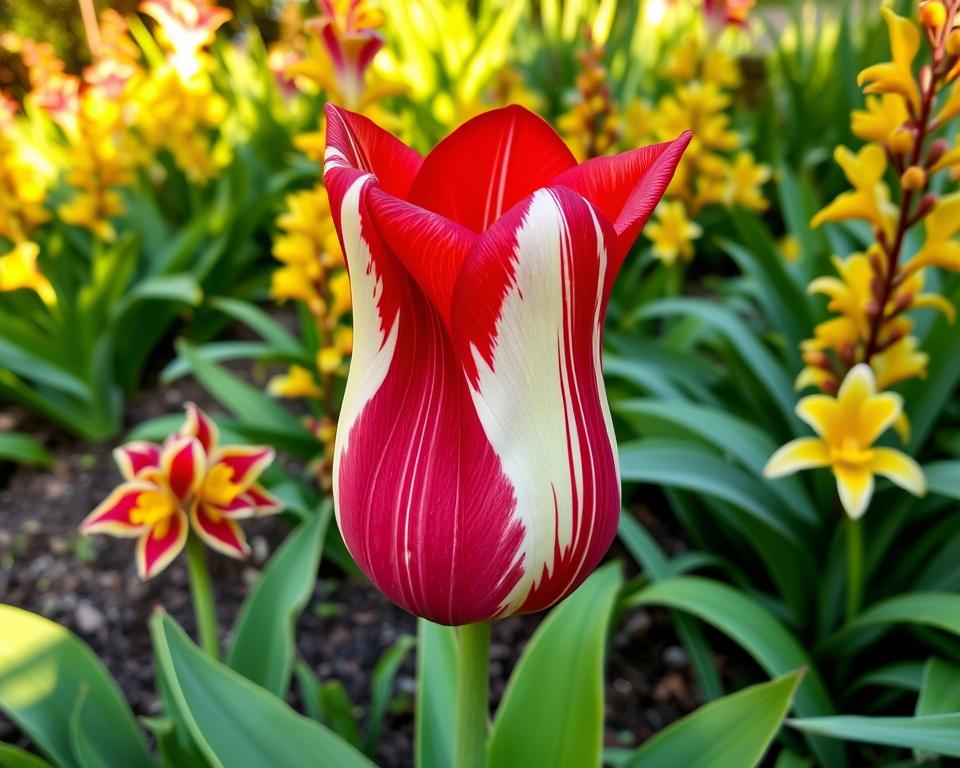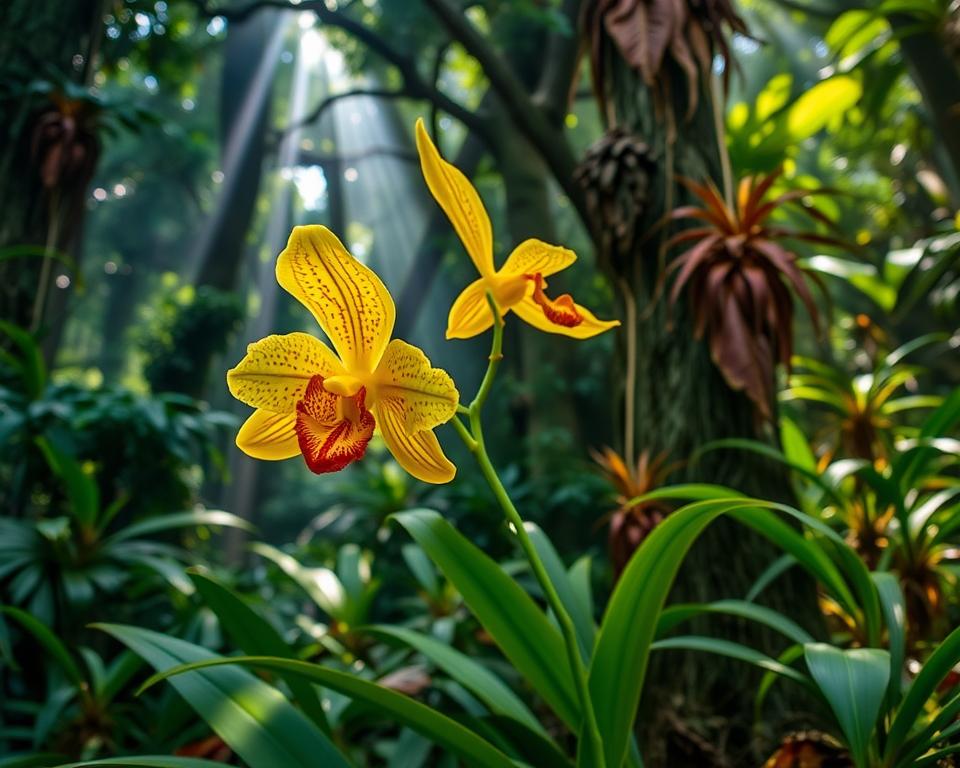The Ultimate Guide to Planting and Maintaining Peonies
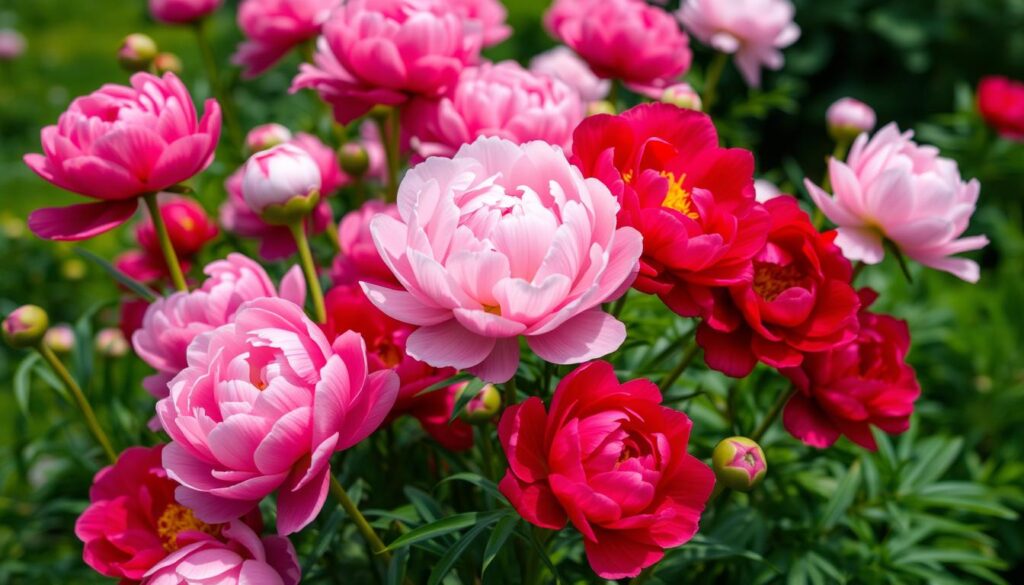
Peony flowers capture our hearts with their lush blooms and delicate petals. They are a timeless choice for gardens. Peonies care is simple, and with the right techniques, anyone can enjoy these stunning flowers.
This guide will take you through every step of planting and maintaining peonies. From choosing the perfect variety to mastering care, we’ve got you covered.
Peonies are a favorite in gardens for their beautiful flowers and low maintenance. By following this guide, you’ll enjoy your peony flowers for years. They will bloom year after year, adding beauty and elegance to your landscape.
This guide is for both seasoned gardeners and beginners. It covers everything from peony care basics to advanced techniques. We aim to help you create a stunning peony garden that will impress your neighbors.
Introduction to Peonies
Peonies are a favorite in gardens for their beautiful flowers and easy care. They are perennials that come in many colors and types. Each has its own look and meaning.
The meaning of peonies can change based on their color and type. Pink peonies are linked to love and gratitude. White peonies mean good luck and wealth. With so many varieties, you can pick the perfect one for your garden.
Peonies are also loved for their hardiness and simple care. They can grow well in many conditions. This makes them great for all gardeners. Knowing about the different peonies helps you create a beautiful garden that blooms for years.
Overview of Peony Types
There are several peony types, like herbaceous, tree, and intersectional. Each type needs different care and grows differently. We’ll explore these in more detail later.
Benefits of Growing Peonies
Peonies are loved by gardeners for their beauty. They come in many colors, from soft pastels to bright hues. This makes any garden look stunning. The peony season is eagerly awaited, as it brings beautiful flowers for weeks.
Peonies are easy to care for and can live for decades. They are a rewarding choice for gardeners. For more on peonies, visit why grow peonies.
Aesthetic Appeal
Peonies have large, elegant flowers. They are perfect for adding elegance to gardens. Their colors and petals are great for bouquets and arrangements.
Fragrance and Variety
Peonies also have a sweet scent. This scent attracts pollinators and fills the air. With many colors and fragrances, gardeners can create unique spaces.
Longevity and Low Maintenance
Peonies can live for decades with the right care. They are also easy to maintain. This makes them ideal for busy gardeners or beginners.
Choosing the Right Peony Varieties
Choosing the perfect peony plant for your garden is key. Knowing the different peony varieties is essential. Consider maintenance, growth habits, and beauty when picking. Peony care varies by type, so pick one that suits your lifestyle and gardening skills.
There are many peony types, each with its own traits.
Herbaceous Peonies
are the most common and easy to care for. They have beautiful flowers and are great for beginners. On the other hand,
Tree Peonies
are like shrubs and can grow big. They’re perfect for those with more space and want to make a big impact.
Intersectional Peonies
are a mix of both. They have the hardiness of herbaceous peonies and the exotic look of tree peonies.
Here’s a quick comparison of peony varieties to help you decide:
| Peony Variety | Maintenance | Growth Habit | Aesthetic Appeal |
|---|---|---|---|
| Herbaceous Peonies | Low | Compact | Beautiful flowers |
| Tree Peonies | Medium | Large shrub | Exotic look |
| Intersectional Peonies | Low | Compact to medium | Unique flowers |
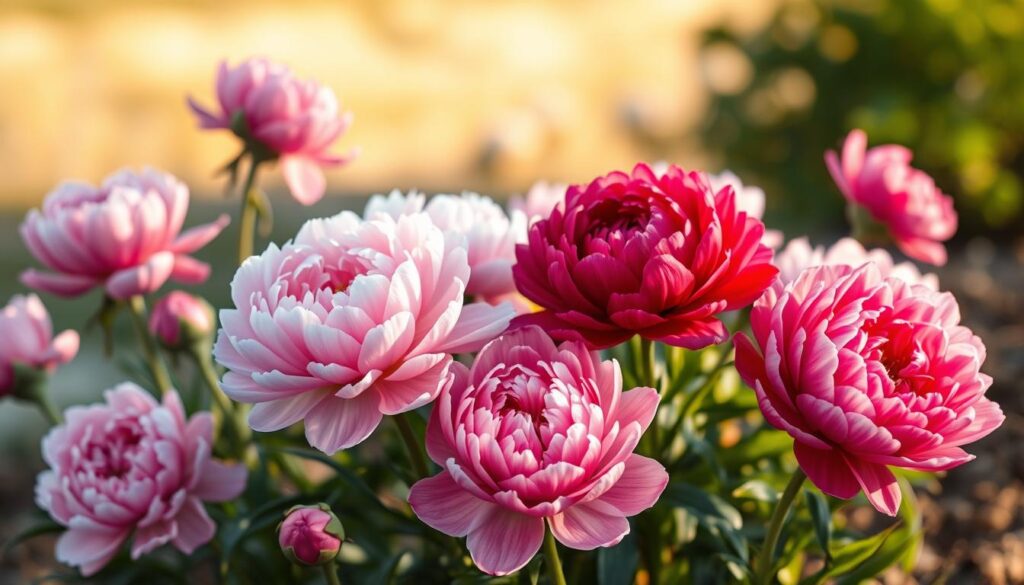
By thinking about these factors and picking the right peony variety, you’ll enjoy their beauty and fragrance. You’ll also ensure they get the care they need.
Ideal Growing Conditions for Peonies
Peonies are quite adaptable but still need specific growing conditions to thrive. Knowing the best conditions for a peony plant is key for a healthy bloom. The soil should be well-draining and rich in organic matter, which is vital for peonies.
Most peonies need full sun to partial shade, depending on the type. Climate also plays a big role, as peonies need chill hours to bloom well. This is a critical part of peony care, affecting the plant’s growth and bloom.
Soil Type and Drainage
A well-draining soil with compost and organic matter is perfect for peonies. This soil prevents waterlogged conditions, which harm the plant.
Sunlight Requirements
Most peonies need at least six hours of direct sunlight daily. But, some types can handle partial shade, making them great for shady spots.
Climate Considerations
Peonies need 30 to 60 days of temperatures below 40°F to bloom well. This chill period is crucial for a beautiful bloom and a healthy plant.
Planting Peonies Step by Step
Planting peonies is easy but needs some care for them to thrive. The first thing is to pick the right spot. Peonies need sunlight and the right soil to grow well. Next, prepare the soil by loosening it and adding organic matter if needed.
Preparing the Planting Site
This step is key for the peony’s health. The soil should drain well and be full of nutrients. Adding compost or manure can make the soil better. When planting, make sure the peony’s crown is 1-2 inches below the soil.
Correct Planting Depth
Planting at the right depth is crucial to avoid crown rot. Water the peony well, especially in its first year. This helps the roots grow strong and the plant healthy. With these steps and care, you’ll enjoy beautiful peony blooms for years.
| Step | Description |
|---|---|
| 1. Prepare the planting site | Loosen the soil and add organic matter if necessary |
| 2. Plant the peony | Plant the peony at the correct depth, with the crown 1-2 inches below the soil surface |
| 3. Water the peony | Water the peony regularly, especially during its first growing season |
Watering and Fertilizing Peonies
Proper care for peonies means giving them the right water and nutrients. It’s key to keep the soil moist but not too wet. How often you water depends on the weather and soil type. Peonies in hot places need more water.
Watering Frequency
Peonies need about 1-2 inches of water each week. This can come from rain or a hose. Too much water can harm the roots. For nutrients, a balanced fertilizer in early spring helps them grow and bloom.
Types of Fertilizers
There are organic and chemical fertilizers for peonies. Organic options like compost feed the soil slowly. Chemical fertilizers give a quick nutrient boost but can harm the environment. The choice depends on what you prefer and your peonies’ needs.
| Fertilizer Type | Benefits | Drawbacks |
|---|---|---|
| Organic | Promotes healthy soil biota, releases nutrients slowly | May be more expensive, slower-acting |
| Chemical | Provides quick burst of nutrients, often less expensive | May have negative environmental impacts, can burn roots if overapplied |
Organic vs. Chemical Options
Knowing how to water and fertilize peonies is crucial. With the right care, including regular watering and fertilizing, you can enjoy beautiful blooms for years.
Pruning and Deadheading Peonies
Proper care of peonies includes regular pruning and deadheading. These steps help keep the flowers healthy and looking great. Pruning peonies in the fall, after they bloom, is best. This lets the plant save energy for next year.
Pruning techniques differ for each type of peony. For herbaceous peonies, cut stems back to 3-4 inches from the ground. This saves energy and protects against winter damage. Tree peonies need gentle pruning because they’re sensitive to cuts. Deadheading peonies also boosts blooming and stops seed production.
Pruning methods vary by peony type. Knowing your peony’s specific needs is key to good care. With the right pruning and deadheading, your peonies will thrive. Follow these tips for beautiful, healthy peonies for years.
Managing Pests and Diseases
Peonies, like all plants, can face pests and diseases. These can harm their health and beauty. Common pests include aphids, slugs, and snails, which damage leaves and flowers. Regular checks can spot these pests early, helping to act fast.
Diseases like powdery mildew and botrytis can also be a problem. They make foliage look bad and hurt blooming. Good air flow and removing weeds can help. Also, watering peonies right is key to avoid disease.
Common Peony Pests
Aphids, slugs, and snails are common pests. They can be managed with organic or chemical methods. For example, neem oil fights aphids, and copper tape keeps slugs and snails away.
Preventative Measures
Good care is key to prevent pests and diseases. Plant peonies in well-draining soil and give them enough sunlight. Water them right and check them often. These steps help keep peonies healthy and beautiful.
Treatment Options
If pests or diseases show up, there are ways to treat them. Options include organic methods like neem oil and insecticidal soap, or chemical ones like fungicides and insecticides. Choose the best treatment for the problem, thinking about the environment and health. By caring for peonies well, gardeners can keep them healthy and thriving.
Seasonal Care for Peonies
Peonies are stunning flowers that need care all year to thrive. Proper peony care is key to enjoying their blooms. Growing peonies can be rewarding, but knowing their seasonal needs is crucial.
During the growing season, peonies need regular watering and fertilization. As the peony season goes on, it’s important to support the plants. This prevents them from flopping over. In the spring, remove dead foliage and apply a balanced fertilizer to promote healthy growth.
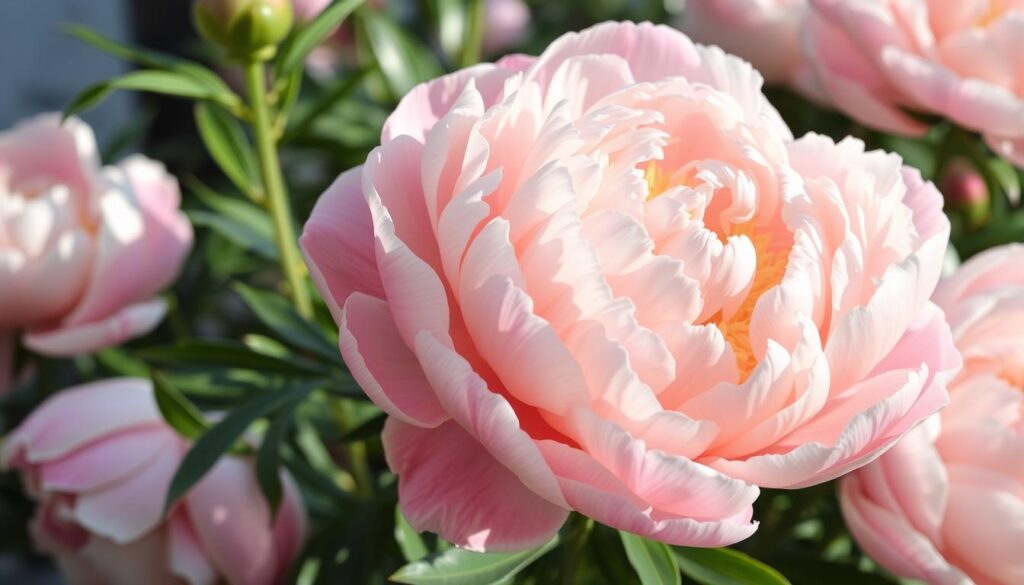
Spring Care
In the spring, peonies need careful attention. Remove dead foliage and apply a balanced fertilizer. This helps promote healthy growth and encourages blooming during the peony season.
Summer Maintenance
During the summer, peonies need regular watering. They might also need staking to prevent the flowers from flopping over. It’s also important to watch out for pests and diseases that can damage the plants.
Fall Preparation
In the fall, peonies should be cut back. The area should also be cleaned up to prevent disease. This prepares the plants for the next growing season and keeps them healthy and thriving.
| Season | Peony Care Requirements |
|---|---|
| Spring | Remove dead foliage, apply balanced fertilizer |
| Summer | Regular watering, staking, pest and disease control |
| Fall | Cut back plants, clean up area to prevent disease |
Conclusion: Enjoying Your Peony Garden
With the right care, a peony garden can bring years of beauty. This guide helps you create a stunning garden that will impress everyone. Peonies are perfect for adding elegance to your outdoor space, whether you’re experienced or new to gardening.
Peonies are easy to grow and can do well in many conditions. Their beautiful blooms and fragrance make gardening a rewarding experience. So, plant some peonies and enjoy the beauty they add to your garden.
This guide gives you the tools to care for your peonies and create a stunning display. Growing peonies lets you enjoy their timeless beauty and the joy of a thriving garden.
